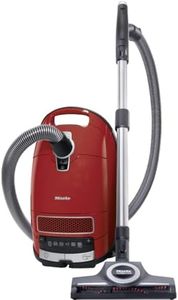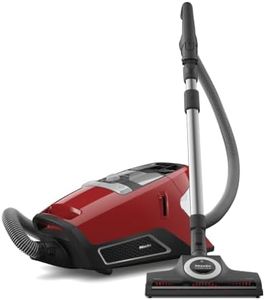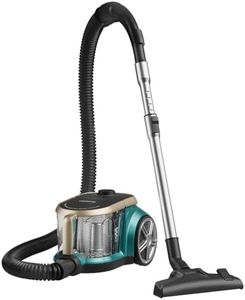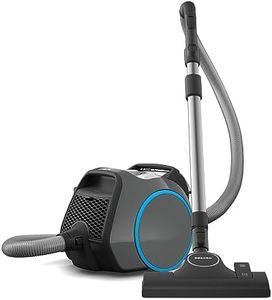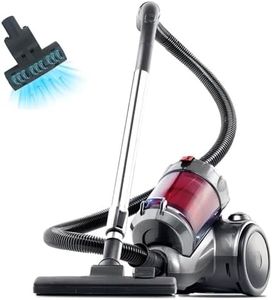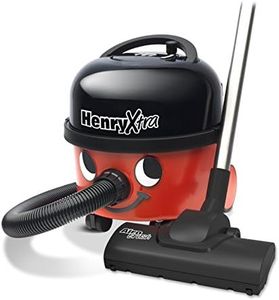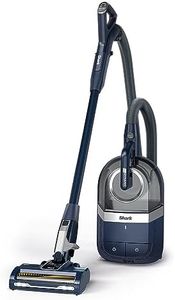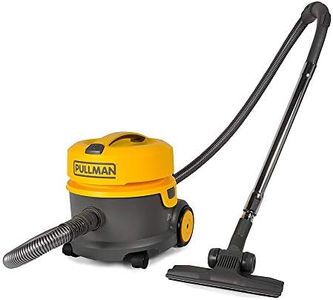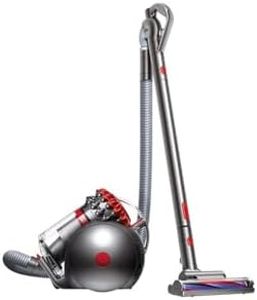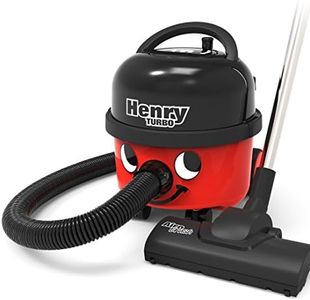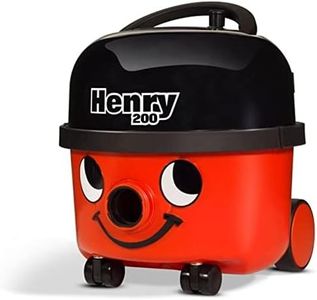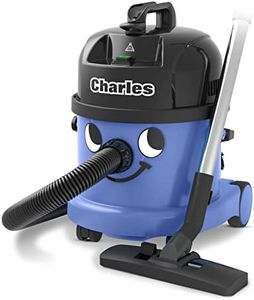We Use CookiesWe use cookies to enhance the security, performance,
functionality and for analytical and promotional activities. By continuing to browse this site you
are agreeing to our privacy policy
10 Best Canister Vacuum Cleaners
From leading brands and best sellers available on the web.Buying Guide for the Best Canister Vacuum Cleaners
When you're shopping for a canister vacuum cleaner, it's helpful to take a step back and think about the areas you'll be cleaning, the types of surfaces in your home, and any specific concerns—like allergies or pet hair. Canister vacuums, with their separate motor and dust container connected to a flexible hose, are known for being versatile and easy to maneuver, especially under furniture or on stairs. Before you decide, consider the main features and how they match your lifestyle and living space.Suction PowerSuction power determines how effectively the vacuum can lift dirt and debris from various surfaces. If you have mostly carpets, higher suction is important for pulling dust deep from the fibers, while bare floors generally require less suction. Suction is often measured in watts or air watts, with higher numbers indicating stronger suction. Lighter jobs (mostly hard floors, or minimal use) can make do with lower suction, but if you have thick carpets, pets, or heavy messes, look for a model with greater suction power.
Filtration SystemThe filtration system traps fine dust, allergens, and particles, preventing them from being blown back into the air. HEPA filters are the gold standard for trapping tiny allergens, which is extremely important if someone in the home has allergies or asthma. Standard filters capture larger dust, but may let finer particles escape. Think about who lives in your house—if allergies or asthma is a concern, prioritize a vacuum with HEPA or advanced filtration. If not, a standard filter may be sufficient.
Bagged vs. BaglessCanister vacuums come in both bagged and bagless styles. Bagged vacuums collect debris in a disposable bag, which is easy and cleaner to dispose of, but requires ongoing purchase of bags. Bagless models use a dustbin that you empty and reuse, saving money but sometimes making it messier to empty. If you want less hassle with maintenance and don't mind buying bags, a bagged option is good. If you prefer not to buy extra bags and don't mind cleaning the dustbin, bagless might be for you.
Weight and ManeuverabilityWeight and maneuverability affect how easy the vacuum is to use, especially if you need to move up and down stairs or clean under furniture. Lighter models are easier to carry and steer but may have smaller capacities and less power, while heavier models might offer more features but can be more cumbersome. If you have a multi-story home or can't lift heavy things easily, lighter vacuums are a better fit. For larger, single-floor homes where portability is less of an issue, a bigger unit might be fine.
Attachments and AccessoriesAttachments like crevice tools, upholstery brushes, and motorized pet tools expand what your vacuum can do. If you have pets, look for special brushes that help remove hair. For homes with lots of tight spaces or delicate surfaces, look for multiple or specialized attachments. Consider what you’ll clean most (bare floors, carpets, upholstery, high corners), and make sure the vacuum includes tools to make those jobs easier.
Cord Length and Hose ReachCord length and hose reach determine how far you can vacuum without changing outlets or moving the canister. Longer cords and hoses are more convenient for large spaces or rooms without many outlets, while shorter ones work fine in smaller, easily accessible spaces. If your home has large open rooms or long hallways, get a vacuum with a longer cord and hose. For smaller or more segmented spaces, shorter ones suffice.
Noise LevelNoise level, usually measured in decibels, makes a difference if you're sensitive to sound or clean at times when others might be disturbed. Quieter models are a good choice for apartments, shared homes, or people who dislike loud appliances. If noise is a priority, look for vacuums that specifically advertise low noise or have sound-dampening features.
